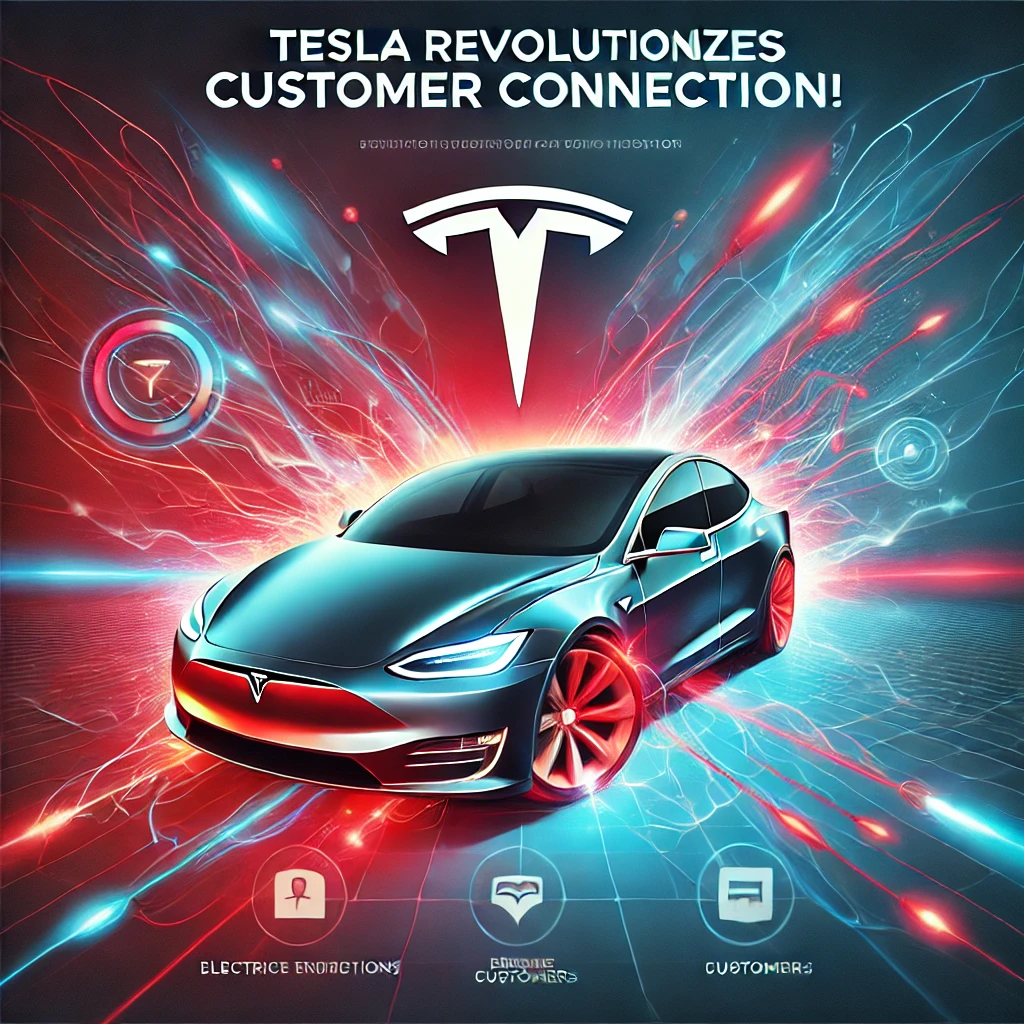Tesla has redefined the auto industry by cutting out traditional dealerships and establishing a direct-to-consumer model.
This approach not only disrupts the industry but also allows the company to build a strong, direct relationship with customers.
For startup founders, there are several lessons to be learned from Tesla's strategy.
Understanding the Traditional Auto Industry Model
Before Tesla, automakers relied on third-party dealerships to sell their vehicles. These middlemen controlled the customer experience, from sales to service, often diluting the brand's message.
This model can create friction, reduce profit margins, and result in a disjointed customer experience.
Tesla’s Game-Changing Approach
Tesla’s founder, Elon Musk, saw an opportunity to break this mould. By selling cars directly to customers through company-owned showrooms and an online platform, Tesla maintained control over the entire customer journey.
The result? A streamlined, consistent, and high-quality experience.
Why This Matters for Startups
For startups, controlling the customer experience is crucial. It’s not just about selling a product; it’s about creating a loyal customer base that feels connected to your brand.
Here’s how you can apply Tesla’s approach to your own business.
Actionable Takeaways for Startups
1. Build a Direct Relationship with Customers
Having a direct line to your customers means you control their experience from start to finish.
Whether you’re in tech, retail, or services, find ways to eliminate intermediaries. Use digital platforms to interact directly with your audience, gather feedback, and offer support.
How to Implement This:
- Leverage E-commerce: Set up your own online store instead of relying on third-party platforms.
- Social Media Engagement: Actively engage with your audience on social media to build a community.
- Customer Support: Use chatbots or personalized email support to offer direct assistance.
2. Control the Customer Experience
With a direct-to-consumer model, you can manage every touchpoint in the customer journey.
This control ensures that your brand’s values and quality standards are consistently upheld, leading to higher customer satisfaction and loyalty.
How to Implement This:
- Branded Spaces: If you have physical products, consider branded retail spaces or pop-up stores.
- Own Your Supply Chain: Like Tesla, owning or closely managing your supply chain can help maintain quality and reduce costs.
- Direct Marketing: Use email campaigns and personalized offers to engage your customers without intermediaries.
3. Innovate Customer Education
Tesla doesn’t just sell cars; they educate customers on the benefits of electric vehicles. Similarly, startups should focus on educating their customers about their products, industry trends, and more.
Educated customers are more likely to make informed purchases and become brand advocates.
How to Implement This:
- Content Marketing: Create blogs, videos, and webinars that provide value and position your brand as an industry expert.
- Customer Onboarding: Develop onboarding processes that teach customers how to use your products effectively.
- Interactive Tools: Use tools like online calculators or AR apps to help customers understand your offerings.
4. Utilize Technology to Scale
Tesla’s online platform allows customers to configure and order cars from anywhere. Startups can use technology to scale their operations without sacrificing the personal touch.
Digital tools can automate processes and help you reach a global audience.
How to Implement This:
- Automated Sales Funnels: Use CRM software to track and manage leads efficiently.
- Scalable Support Systems: Implement AI-driven support solutions to handle queries at scale.
- Global E-commerce: Set up your online store to support international shipping and multiple languages.
5. Create a Unique Brand Identity
Tesla’s direct approach has helped build a distinctive brand identity that resonates with its audience.
For startups, developing a unique brand identity can differentiate you from competitors and foster a loyal community.
How to Implement This:
- Consistent Messaging: Ensure that your brand’s voice, values, and visuals are consistent across all platforms.
- Brand Storytelling: Share your company’s mission, vision, and journey in a way that resonates with your audience.
- Customer Involvement: Use customer stories and testimonials to build a relatable brand narrative.
Challenges and How to Overcome Them
Of course, implementing a direct-to-consumer model isn’t without challenges. Regulatory issues, logistical complexities, and initial capital investment can be barriers.
However, with strategic planning and innovation, these hurdles can be overcome.
1. Regulatory Hurdles
In many industries, regulations can limit direct sales. Tesla faced resistance in several U.S. states that restricted direct car sales.
Startups should research local laws and consider creative solutions, such as partnerships or hybrid models.
2. Supply Chain Management
Managing a direct supply chain can be complex. Start small, focusing on key areas where you can have the most impact.
Partner with suppliers who share your quality standards and can scale with you as you grow.
3. Capital Requirements
Establishing a direct model can require significant upfront investment. Look for cost-effective digital solutions to manage sales and marketing.
Consider strategic partnerships or crowdfunding to offset initial costs.
Final Thoughts
Tesla’s direct-to-consumer model is a powerful case study in disrupting traditional industries.
For startup founders, it offers a blueprint for building a brand that’s closely connected to its customers.
By owning the customer journey, you not only differentiate your business but also create a loyal community that will support you as you scale.
Remember, it’s not just about cutting out the middleman. It’s about taking ownership of the entire customer experience, from first contact to post-purchase support.
If you can master this, your startup will be well-positioned for long-term success.
So, how will you redefine your customer relationships? Start small, be bold, and watch your startup transform into a brand that truly resonates with its audience.










